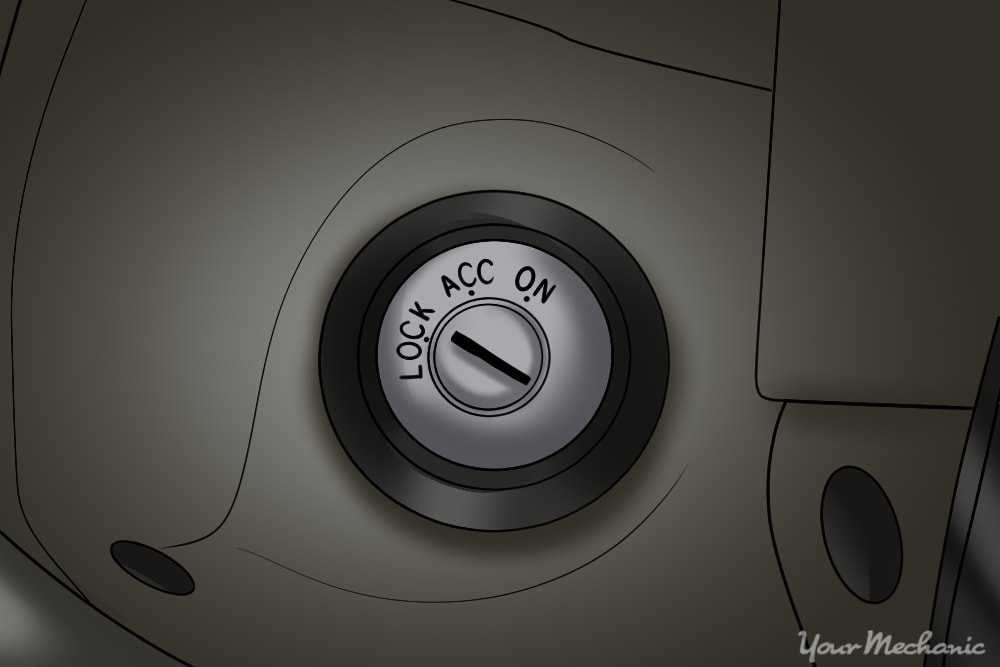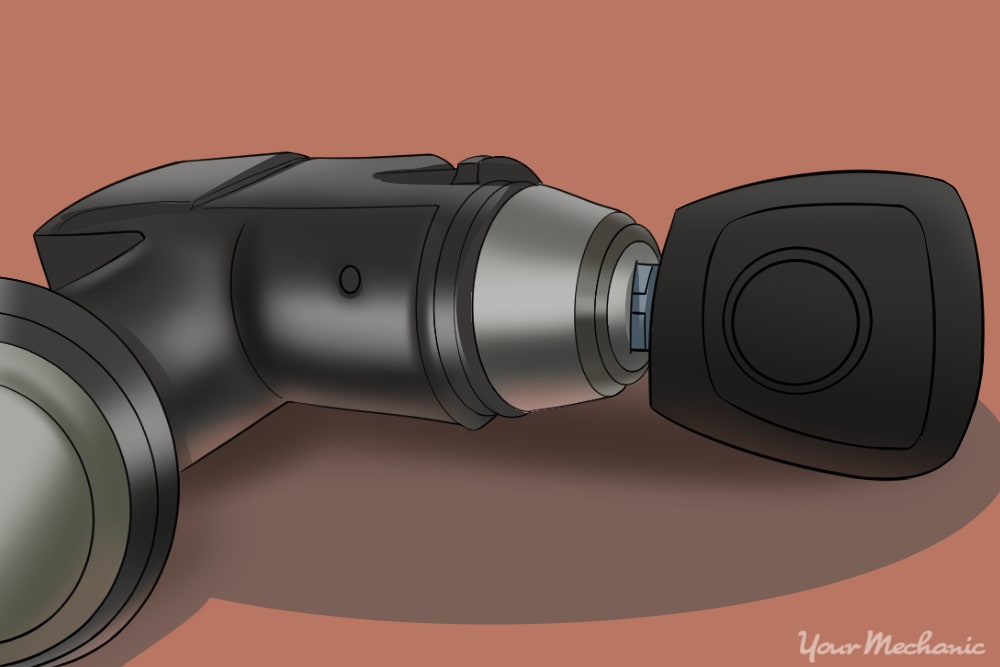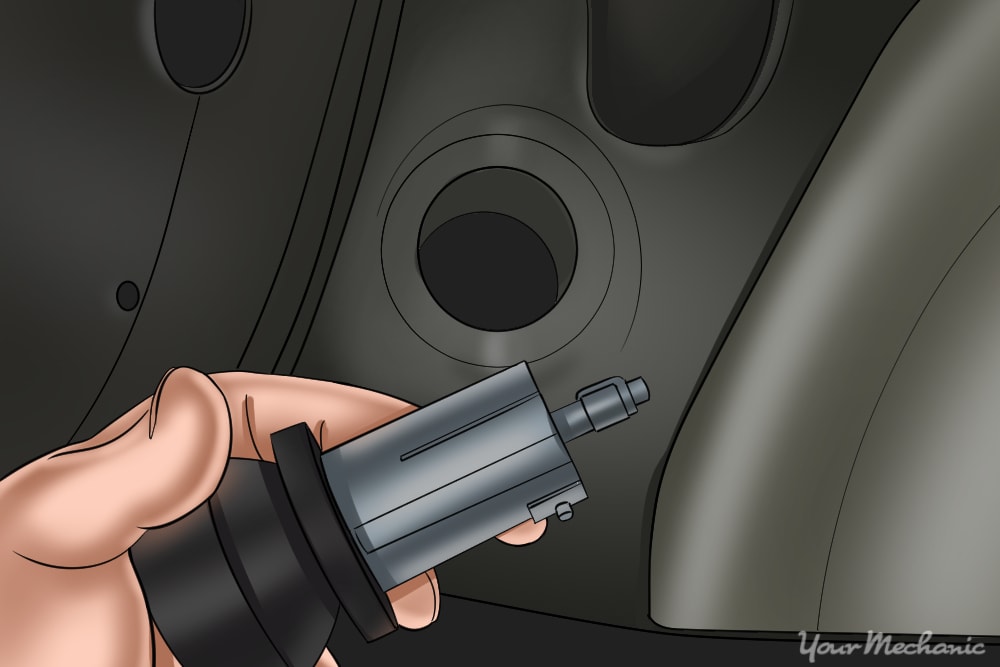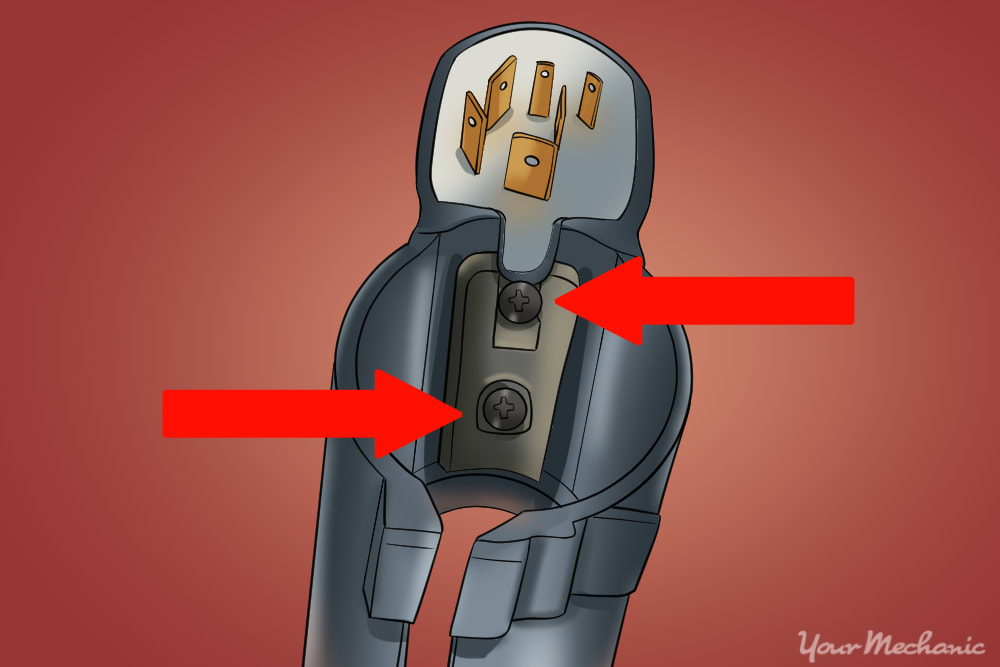

The ignition lock cylinder is located inside the assembly or lock body that is often welded onto the steering column. Most of the time, when a problem occurs within the ignition system, it will be caused by a fault within the ignition lock cylinder. Inside the lock cylinder are a series of tumblers where the key is inserted. There is an electrical attachment and a series of wires that run from the cylinder base to a series of relay switches that supplies power to multiple components. Some of the common symptoms of a damaged or broken ignition lock cylinder include the vehicle not starting or power not supplied to the vehicle when the ignition is turned.
Most modern cars that have keyless remote starting have a key that has a computer chip inside of it. This requires a different type of ignition system. The instructions noted below are for older vehicles without a chip-style ignition key or push button starting features. Please refer to the vehicle's service manual or contact your local ASE certified mechanic for assistance with modern ignition systems.
Part 1 of 1: Replacing the ignition lock cylinder
Materials Needed
- Boxed end wrench or ratchet sets
- Flashlight or drop light
- Replacement ignition lock cylinder
- Regular sized flat blade and Phillips head screwdriver
- Safety equipment (safety glasses)
- Scan tool
- Small flat blade screwdriver
Step 1: Disconnect the vehicle's battery. Locate the vehicle's battery and disconnect the positive and negative battery cables before proceeding.
You'll be working with electrical components so you need to remove any power sources before beginning this project.
Step 2: Remove the steering column cover bolts. In order to access the ignition lock cylinder, you'll have to remove the column covers.
There are usually two covers, one on top and one underneath.
Find the plastic covers that cover the bolts or screws. Using a small flat blade screwdriver, remove the plastic covers.
Note the size and style of the bolts and use the appropriate tool to remove the bolts. In some cases they will be Phillips head screws or standard/metric sized bolts that will require a socket and ratchet for correct removal.
Step 3: Remove the steering column cover(s). After the bolts have been removed, you should be able to remove the covers from the steering column.
Unlock the steering wheel with the adjustable arm located underneath or to the left of the steering column, so you can move the steering wheel up and down to loosen the column covers.
Step 4: Locate the ignition lock cylinder. After the covers have been removed, you should be able to locate the ignition lock cylinder.
Review your service manual to verify that you have a removable ignition lock cylinder and that your ignition lock assembly is not all inclusive.
- Note: If you have a vehicle that has the lock cylinder attached to the housing, please contact a certified mechanic for assistance with this project.
Step 5: Remove the cover on the ignition lock cylinder. On most vehicles, there is a plastic or metal cover on the ignition lock cylinder. Remove the small screw that holds this cover on, typically located on the bottom of the switch.
Once the screw has been removed, carefully slide the cover off the ignition lock cylinder.
Step 6: Remove the lock cylinder. The process for removing the lock cylinder varies based on the individual manufacturer. There are two parts to removing this component.
First, insert the key and unlock the steering wheel. Next, use a flat blade screwdriver to press a small metal push pin that is located underneath the ignition lock cylinder. By depressing this switch, you'll be able to unlock the cylinder from the housing.
Step 7: Remove the ignition lock cylinder from the housing. After you've pressed the button and unlocked the ignition lock cylinder from the lock body, the ignition lock cylinder will be ready to remove. With the key still inserted, gently remove the ignition lock cylinder from the lock body.
Step 8: Loosen the screws on top of the ignition lock assembly. The lock cylinder is secured to the lock assembly by a button on the bottom of the housing and two screws on top of the lock assembly. Loosen the two screws on top to allow you to remove the cylinder.
Step 9: Install the new ignition lock cylinder. Each manufacturer has unique procedures for installing the new lock cylinder.
- Note: Make sure to consult your vehicle manufacturer's service manual before attempting this.
Once you've successfully inserted the lock cylinder, the rest of the installation process is in reverse of the removal. Tighten two screws on top of the lock cylinder, replace the ignition lock cylinder cover, and replace the steering column covers.
Step 10: Test the operation of the new ignition lock cylinder. Before you reconnect the battery, make sure your new ignition lock cylinder moves to all four positions with the new key.
Test this function three to five times to verify the repair was completed correctly.
Step 14: Reconnect the battery terminals. Reattach the positive and negative terminals to the battery.
Step 13: Clear error codes with a scan tool. On newer vehicles that have electronic control modules and a standard key ignition system, the Check Engine Light will illuminate on your dashboard if there was a problem detected by your ECM. If these error codes are not cleared before you test fire the engine, it is possible that the ECM will not allow you to start the vehicle. Make sure to clear any error codes with a digital scan tool before you test the repair.
It's always best to refer to your service manual and completely review their recommendations before taking on this type of job. If you've read these instructions and still don't feel completely confident in completing this repair, please contact one of the ASE certified mechanics from YourMechanic to complete an ignition switch replacement at a time and place that is convenient for you.








